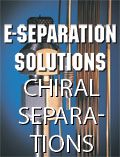58th ASMS Conference Review
LCGC reviews some of the highlights and award recipients from this year's ASMS conference, held May 23-27, 2010, in Salt Lake City, Utah.
May brought a lot more than spring to the air this year as the scientific community geared up for the 58th ASMS Conference on Mass Spectrometry and Allied Topics, held at the Salt Palace Convention Center in Salt Lake City, Utah from May 23 through May 27.
The conference began early for some attendees, with several one-and two-day short courses beginning on Saturday May 22, from 9 a.m. to 4:30 p.m. Sunday marked the official start of the conference with more short courses and informative tutorial lectures from 5:00 to 6:30 p.m.
Following the tutorial lectures was the opening session and Plenary Lecture, which featured a talk from Leroy Hood, of the Institute for Systems Biology, entitled “Systems Medicine and Emerging Technologies: Catalyzing the Transformation from Reactive to Proactive (P4) Medicine.” Dr. Hood received his M.D. from Johns Hopkins School of Medicine in 1964 and his Ph.D. in biochemistry from the California Institute of technology in 1968. He has received many awards and accolades over the years, including the 2004 Biotechnology Heritage Award, the 2003 Association for Molecular Pathology (AMP) Award for Excellence in Molecular Diagnostics, the 2006 Heinz Award in Technology, the Economy, and Employment, and in 2007, he was elected to the Inventors Hall of Fame (for the automated DNA sequencer).
A major highlight of ASMS was the award presentations. The Award for a Distinguished Contribution in Mass Spectrometry was presented to Dr. Marvin L. Vestal, founder, CEO, and CSO of Virgin Instruments, on Monday, May 24. Vestal’s development of the practical matrix-assisted laser desorption ionization time-of-flight (MALDI-TOF) and TOF-TOF mass spectrometers resulted in the first commercial MALDI-TOF instrument — the Voyagers series. More than half of MALDI-TOF instruments in use today are based on Dr. Vestal’s designs.
The Biemann Medal was presented to Dr. David C. Muddiman, of North Carolina State University for his discovery that one strand of a PCR amplicon appears more intense than the complementary strand in an electrospray ionization (ESI) mass spectrum. Dr. Muddiman has developed alternative ion sources for FT-ion cyclotron resonance (ICR) MS, including the dual ESI source, MALDI-ESI, liquid MALDI-ESI, and an “air amplifier” for more efficient ESI. The significance of these advances is that they allow generation of multiple charged species, which are uniquely suited for FT-ICR-MS due to the inverse relationship between frequency and m/z.
ASMS gave the scientific community another hit this year with many superb sessions, posters, workshops, and hospitality suites. Next year’s ASMS conference is scheduled to be in Denver, Colorado — we at LCGC can’t wait to see what the 2011 program has to offer!
Regulatory Deadlines and Supply Chain Challenges Take Center Stage in Nitrosamine Discussion
April 10th 2025During an LCGC International peer exchange, Aloka Srinivasan, Mayank Bhanti, and Amber Burch discussed the regulatory deadlines and supply chain challenges that come with nitrosamine analysis.









